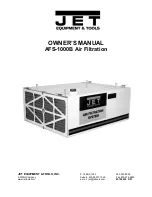
Page 17
Revised 05−2009
TPA*S4
V − WIRING DIAGRAM AND SEQUENCE OF OPERATION
TPA*S4 230 VOLT UNIT DIAGRAM
5
1
2
4
3
6
COOLING:
Internal thermostat wiring energizes terminal O by cooling
mode selection, energizing the reversing valve L1.
1−
Demand initiates at Y1 in the thermostat.
2−
Assuming high pressure switch S4 and low pressure
switch S87 are closed, 24VAC energizes compressor
contactor K1.
3−
K1-1 N.O. closes, energizing compressor (B1) and
outdoor fan motor (B4).
END OF COOLING DEMAND:
4− Demand is satisfied. Terminal Y1 is de-energized.
5− Compressor contactor K1 is de-energized.
6− K1-1 opens and compressor (B1) and outdoor fan motor
(B4) are de-energized and stop immediately.
FIRST STAGE HEAT:
Internal thermostat wiring de−energizes terminal O by heat-
ing mode selection, de−energizing the reversing valve L1.
See steps 1, 2 and 3.
End of FIRST STAGE HEAT:
See steps 4, 5 and 6.
DEFROST MODE:
During heating operation when outdoor coil temperature drops below
35°F (2°C) or 42°F (5.5°C)defrost switch (thermostat) S6 closes.
Defrost control CMC1 begins timing. If defrost thermostat (S6) remains
closed at the end of the 30,60 or 90 minute period, defrost relay ener-
gizes and defrost begins.
During
defrost CMC1 energizes the reversing valve and W1 on the ter-
minal strip (operating indoor unit on the first stage heat mode), while
de-energizing outdoor fan motor B4.
Defrost continues 14 + 1 minutes or until thermostat switch (S6) opens.
When defrost thermostat opens, defrost control timer loses power and
resets.
When CMC1 resets, the reversing valve and W1 on the terminal strip
are de-energized, while the outdoor fan motor B4 is energized.
When CMC1 resets, the reversing valve and W1 on the terminal strip
are de-energized, while the outdoor fan motor B4 is energized.


































